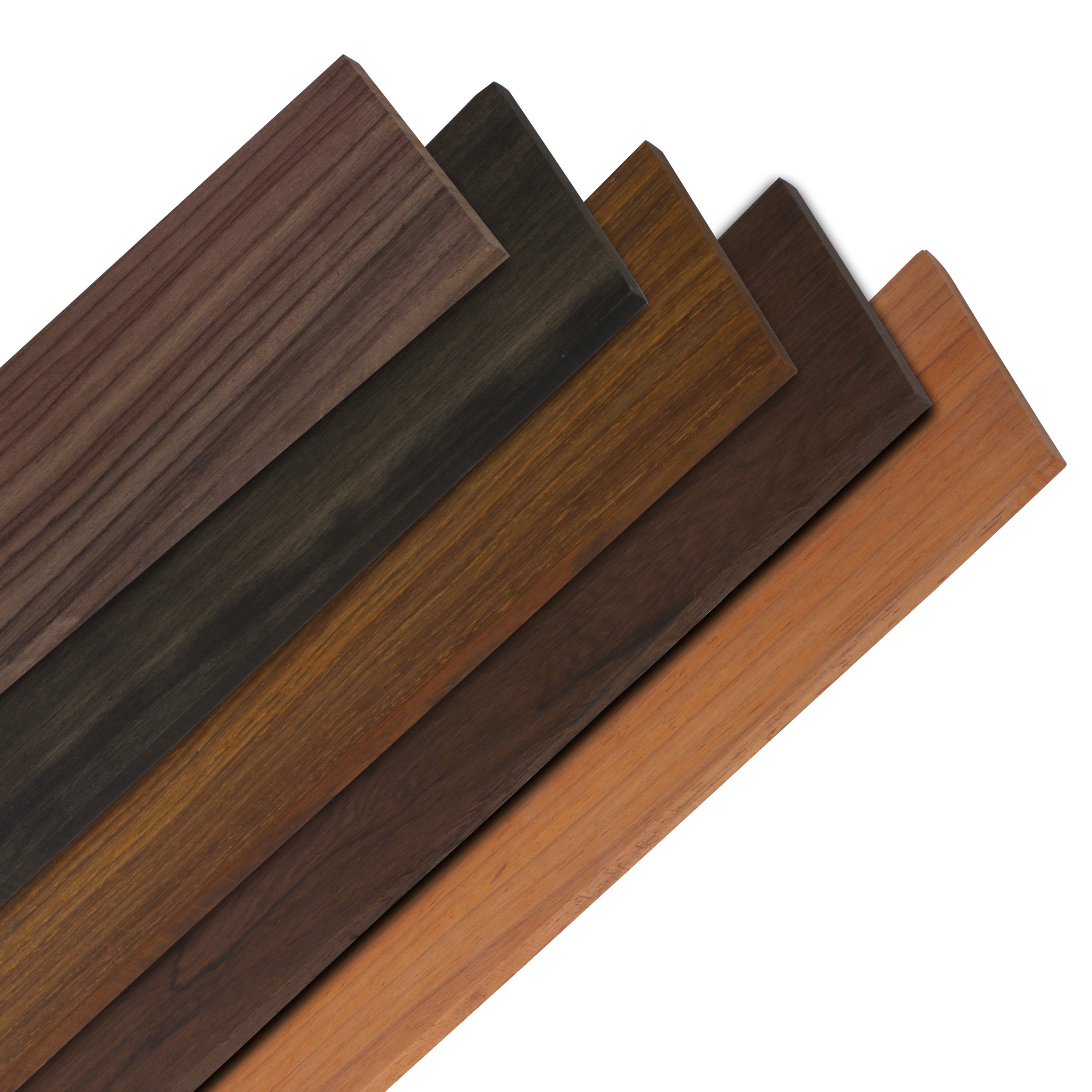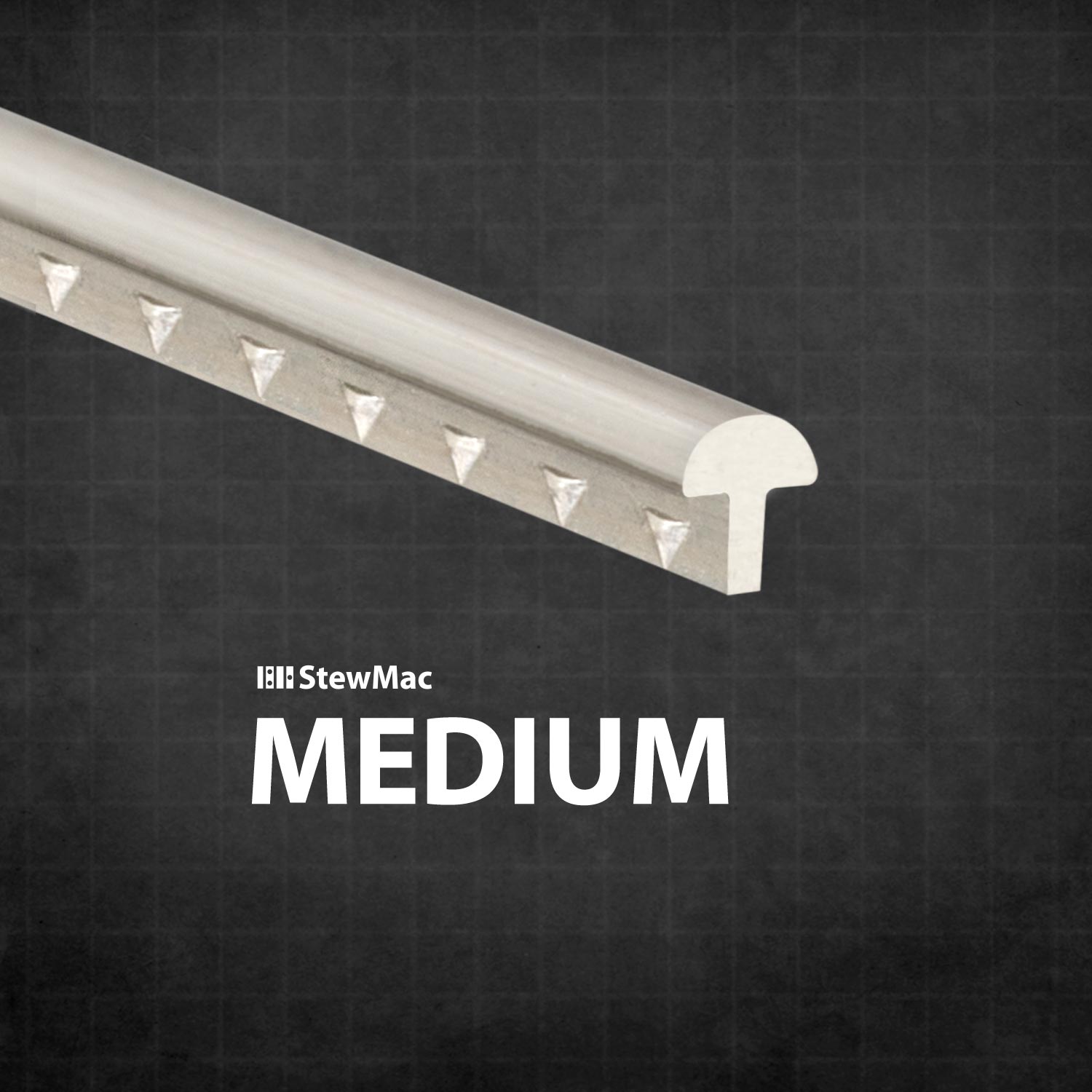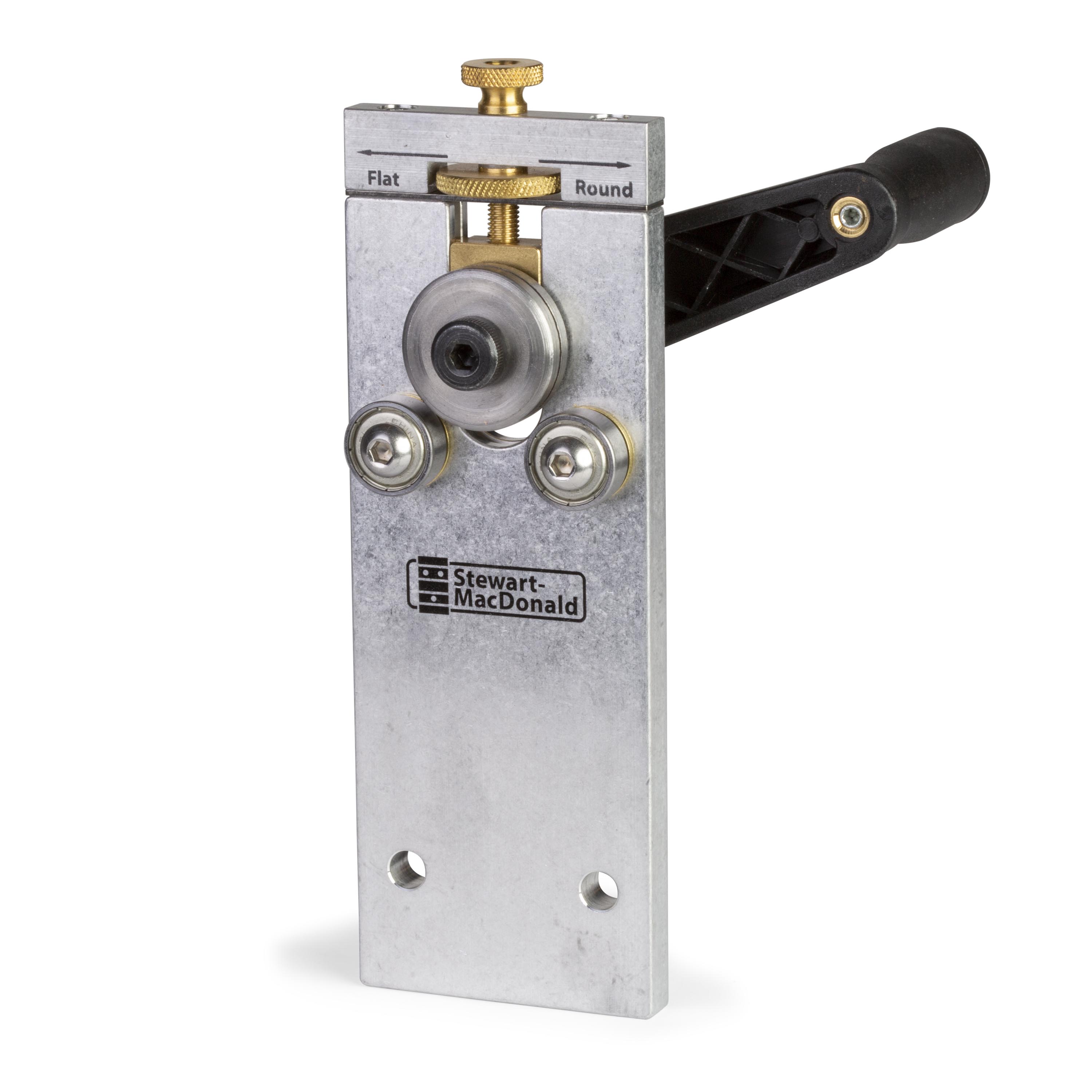Table saw shooting board for fret slots and flexible cauls
Issue 179 December 06, 2012
A make-it-yourself solution for fast accurate 90 degree cuts on your table saw. Also a cool tip on making bendy, flexible cauls that follow the shapes on a guitar.
- The solution to cutting repeatable 90° angles
- Cutting fret slots with a pin-register template
- Making flexible wood cauls that fit curves
- Making custom kerfing (lining strips)
Video Transcription
[on-screen text reads: Dan Erlewine - Stewart-MacDonald]
Dan Erlewine: It's hard to get perfect 90 degree crosscuts with the standard miter gauge that comes with a table saw. You can do it with a thing called a shooting board or a crosscut slide, and that's what this is. It's a piece of hard Masonite quarter inch stick with a couple of strips of wood on the bottom that locate on the slides of the table saw. The strips on the bottom of my board are just slightly more narrow than the groove, so it's a snug but easy fit. And I have two fences. The fence here, the taller one is for my wider cut. That's for a cabinet blade. And the fence at the rear is for this skinny cut for cutting fret slots or kerfing what have you. Right now I'm going to flip it around and use the skinny blade and cut some fret slots.
Cut fret slots with a shooting board
This is a Fret Slotting Saw Blade. It cuts a 23,000 slot and the cutting edge is about a half an inch deep. Then it gets thick. That's the main part of the blade is thicker for strength. So when you square this blade up, before you start cutting with it, put the square on the heavy, thick part. You'll see a gap where the teeth are, but you're square into the thick part of the blade. And I already set this one.
Here's how to use the shooting board to cut some fret slots. I've got my short fence in there and an index pin, and that's going to locate on the slots in the fret scale template. With double stick tape, I can lock the template onto the fingerboard and then I can just walk it along, cut the slots all the way down.
Make flexible cauls with a shooting board
I have a safety stop here that tells me when the sleds far enough back that it's safe for me to move the index pin along without cutting into the fingerboard or without cutting my finger. I took out the 16th inch pin that indexes the fret scale template and stuck in a little 23 thousands pin. It lets me cut exactly the size of the blade in a regular half inch interval. It's one half inch off the cut, and I can make cauls that will bend that way. I can also move this over to another hole. You could barely see it's five sixteenths off the cut, and I can make Kerfing in a pinch when I need it. If you look at these pieces of wood, I'm making brace calls out of it. They're notched and they sit down over a brace. This is a 57 Southern Jumbo front shoulder back brace.
Now if you look at a brace, it's curved just like the back of the top it's glued to. Therefore, I like to have my call flex. It sits on top of the brace and then it gets this action. It's very strong, but plenty, flexy enough. That's what the curves cut into. It will do. If I move over and use the five 16th cut, I can really get a lot of bend. Imagine this could take the shape of any top, any warp in any top. It's strong there. Very spongy right there. And that's what I'd use to make bridge pad calls. Wax off the top side and it'll bend right to the top. I made that kerfing on the little pin close to the blade because I wanted to leave that waist of wood at the top that you don't normally see. And I wanted to make it out poplar to fit an old 1940s K. So if you want to get good cross cuts on your table saw, take the time to make a good accurate shooting board.







